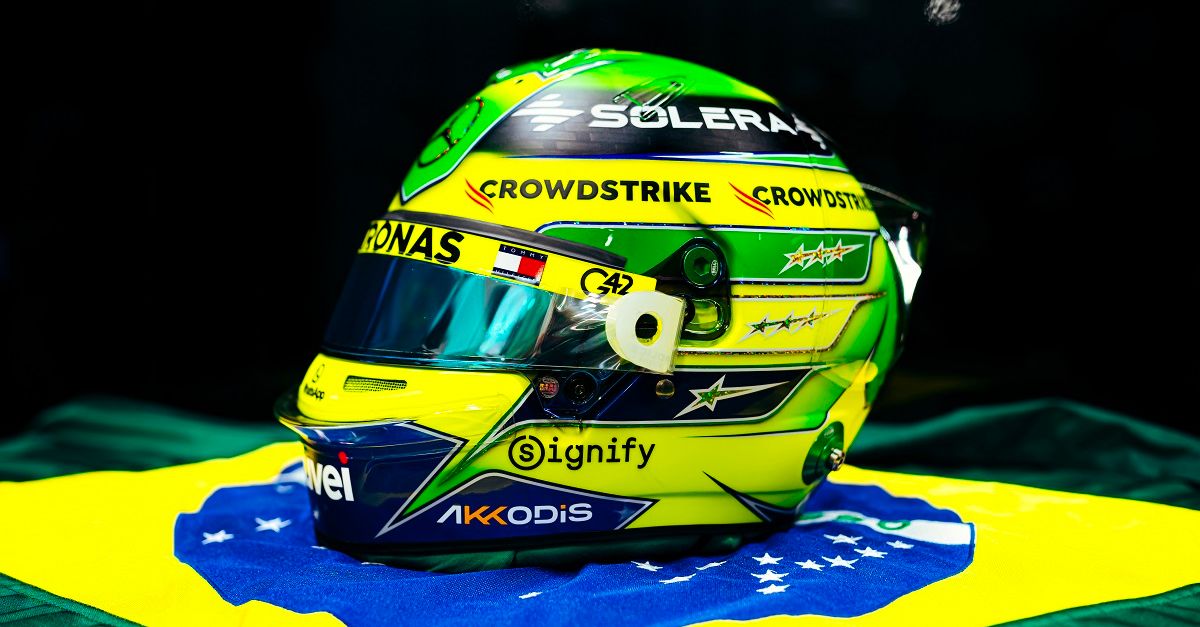[ad_1]
The third successive GP in the Americas takes place in Sao Paulo, Brazil, features the 5th Sprint of the year and will be crucial to the battle for this year’s drivers’ and manufacturers’ titles. Read everything you need to know about the competition, strategy and schedule for this year’s 21st Formula 1 triday.
Although such a thing would have seemed unthinkable until April, when Max Verstappen dominated (again) the Chinese GP, the 21st of the 24 GPs of this year’s F1 season is decisive for Lando Norris’ ambitions to “steal” the drivers’ title from the Dutchman, and for the claim of the constructors’ title between McLaren and Ferrari.
In the drivers’ championship, Norris trails leader Verstappen by 47 points, although the Dutchman has a win from the Spanish GP in June (with the exception of the Texas Sprint).
Norris, however, has reasonable hopes of reducing this gap further, as Interlago is particularly suited to the McLaren MCL38, while Verstappen will receive a 5-place penalty at the start – compared to the one he will win on Saturday 2/11 – due to a change engine.
In the constructors’ race McLaren leads Ferrari by 29 points, but will also hope to score better than the Scuderia at Interlago – and despite the fact that the Ferrari SF-24 is now consistently the most efficient and fastest race-pace car from the end August.

Lance Stroll in the Aston Martin AMR22 at Interlagos in 2022
ASTON MARTIN F1 MEDIA
Tires & strategy
The critical parameter of this three-day period in terms of tire management is the new asphalt that was laid on the 4.3 kilometers of the Interlagos circuit. After the asphalt was laid, it was cleaned with water under strong pressure, resulting in a particularly rough surface.
As a result, the teams are taking a step into the unknown in terms of tire management this three days. And things get even more complicated not only because of Sprint, which leaves only one period of free testing, but also because of Pirelli’s decision to supply them with softer tires compared to last year: the C5 is the soft (with a red border), C4 (yellow) is the middle and C3 (white) is the hard.
However, at Texas Saturday’s small Sprint race proved to be quite crucial in terms of car set-up, and the teams used it to pinpoint their car settings for Sunday’s main event.
In any case, the new asphalt will also bring about increased forces exerted on the tires. And these forces will probably no longer be of average intensity, as in previous years. At least, however, they are equally distributed among all four tires of the car.

Pirelli’s tires for the 2024 Brazilian GP
PIRELLI F1 MEDIA
Usually the best strategy at Interlagos involves two pit stops, using more of the soft rubber. Last year all but one of the drivers chose to start with the soft rubber, but this year it is also softer, and the asphalt rougher.
These last two parameters will open up more strategic options for the teams, factoring in some of them the lottery of the safety car – which makes an appearance in almost 9 out of 10 races at Interlago.
Brazil GP 2024 schedule
- Friday November 1st
16:30-17:30: Free Practice 1 (FP1)
20:30-21:14 Sprint Qualifying (SQ) - Saturday, November 2
16:00-17:00: Sprint Race (SR)
20:00-21:00: Qualifying Tests (Q) - Sunday, November 3
19:00: Race (GP)

The Interlagos circuit in Sao Paulo, Brazil
MERCEDES-BENZ AG
Brazilian GP 2024 / 1-3 November 2024
- First GP: 1973
- Track length: 4.309 km
- Rounds: 71
- Total route: 305,879 km
- Lap record: Valtteri Bottas, 1:10.540 (2018)
- 2023 winner: Max Verstappen
- Most wins: 4 (Michael Schumacher)
- Air temperature forecast: 23-28° Celsius
- Chance of Rain: 60% (Sunday), 40% (Saturday), 20% (Friday)
- Safety vehicle entry probability: 86%
- Pit stop time loss: 20.83” (of which 2.5” at a standstill)
See everything worth knowing about the F1 2024 championship in SPORT24’s Great Feature.
5 Hot Info about the Interlagos circuit
- The Interlagos circuit is officially named Autodromo Jose Carlos Pace in honor of the Brazilian driver who competed in F1 from 1972-77 with Williams, Surtees and Brabham. José Carlos Pace, from Sao Paulo, won his country’s GP in 1975 in the Brabham cockpit. He was lost in a small plane tragedy in March ’77, and his hometown circuit was named in his honor.
- The designers of the circuit drew their inspiration from three great circuits of the planet, since 1938 when its construction began. In particular, they adopted design elements from the Brooklands circuit in Britain, the Roosevelt Raceway in the USA and the Montlhery circuit in France.
- F1 first traveled to the Latin American country in 1973, thanks to the success experienced by Emerson Fittipaldi. In the first three years the Brazilians celebrated as many victories as his compatriots – two by “Emmo” and that of Pace in 1975.
- Like many pre-war tracks, Interlago has banked turns so the final turn along with the center straight resembles an American oval – inspired by the Roosevelt Raceway in Long Island, New York. In fact, from 1957 until 1990 the track also offered the drawing of a normal oval.
- The first chicane – the left and then right turns after the start – is named Senna S, in honor of the great tri champion Ayrton Senna. Next comes the spiraling on the inner part of the track, with several changes in both road gradient and elevation.
[ad_2]
